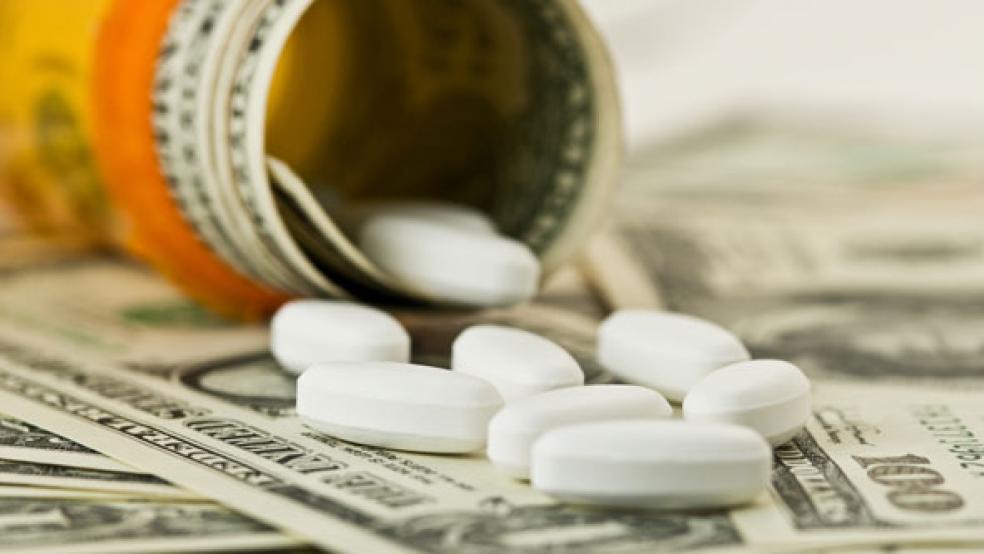Amid surging prescription drug prices and a move towards the use of more expensive medications in treating cancer and other serious diseases, the Obama Administration this week unveiled a controversial pilot project that would encourage doctors to use treatments that they say are high quality but still less costly by lowering their Medicare reimbursements.
The runaway cost of biologic drugs for the treatment of cancer, the Hepatitis C virus and other deadly diseases is putting a huge dent in the budgets of Medicare, Medicaid and veterans’ health programs. It has also prompted calls from congressional leaders, presidential candidates and consumer advocacy groups to crack down on drug companies charging excessive prices and discouraging doctors from overusing pricey prescription medication.
Related: Extreme Rise in Some Drug Prices Reaches a Tipping Point
The new proposal by the Centers for Medicare and Medicaid Services would apply to Medicare Part B, a program for seniors that pays health care providers nearly $20 billion a year, according to a proposed rule published in the Federal Register. The administration has been seeking pricing information from major pharmaceutical companies and exploring ways to contain their drug cost.
Currently, Medicare Part B generally pays physicians and hospital outpatient departments the average sales price of a drug, plus a 6 percent add-on. Under one possible approach, doctors would be reimbursed by Medicare for a drug’s average sale price plus 2.5 percent, as well as a flat daily payment of $16.80. A second approach would link reimbursements to a drug’s effectiveness for different uses. The goal is to force physicians to think twice about prescribing newer and costlier drugs and at least consider prescribing a less expensive alternative.
“Physicians often can choose among several drugs to treat a patient, and the current Medicare Part B drug payment methodology can penalize doctors for selecting lower-cost drugs, even when these drugs are as good or better for patients based on the evidence,” CMS said in a statement accompanying its proposed rules change.
Not surprisingly, the administration proposal is getting strong push back from the medical profession and patient advocates who fear that the proposed overhaul might force doctors to allow price concerns to cloud their judgement in treating patients – especially in the treatment of cancer victims with new and much costlier drugs.
Related: Drug Company Profits Soar as Taxpayers Foot the Bill
“It is inappropriate for CMS to manipulate choice of treatment for cancer patients using heavy-handed reimbursement techniques,” Dr. Allen Lichter, chief executive officer of the American Society of Clinical Oncology, a professional group, told The Wall Street Journal. Patrick Conway, chief medical officer for CMS, signaled to reporters during a conference call Tuesday that while the plan wasn’t designed specifically to save money, the ultimate goal is to eliminate incentives that could encourage physicians to use higher-priced medications that may increase their profits but not necessarily befit the patient, according to The Washington Post.
A new report from the Department of Health and Human Services found that spending on prescription drugs rose by 12.6 percent between 2013 and 2014, ending a period of slower growth dating back to 2008. Drug spending in the U.S. totaled $424 billion in 2014 and an estimated $457 billion in 2015 – and will likely outpace overall health care spending through 2018. The study was first reported by the health and science website STAT.
Some of the reasons for the rapid spending increase include the massive number of aging baby boomers who are now eligible for Medicare, the huge increase in Medicaid through Obamacare, general inflation, and expensive specialty drugs, including biologics.
Related: Wonder Drugs Blow a $1 Billion Hole in VA’s Budget
The pharmaceutical industry’s drive for greater profits and more money for research and promotion is a major factor in the surge in costs to the government and consumers. “The fact that total expenditures rose more quickly than the number of prescriptions suggests that prices are growing faster than quantities,” the HHS report states. “Therefore, price changes are contributing more to the growth in spending than is growth in volume of prescriptions.”
But other factors are at play. Doctors are prescribing far more prescriptions than in the past. They are doing that in part to take advantage of newer, more effective drugs coming onto the market. But also – presumably – they are responding to patients’ requests for more drugs and are dealing with more patients as the overall population grows.
The total number of prescriptions increased from 3.5 billion in 2010 to 3.9 billion in 2014 – an 11 percent increase. Prescription drugs accounted for 16.7 percent of all U.S. healthcare spending in 2015, up from a recent low of 15.3 percent in 2013, according to the report.





